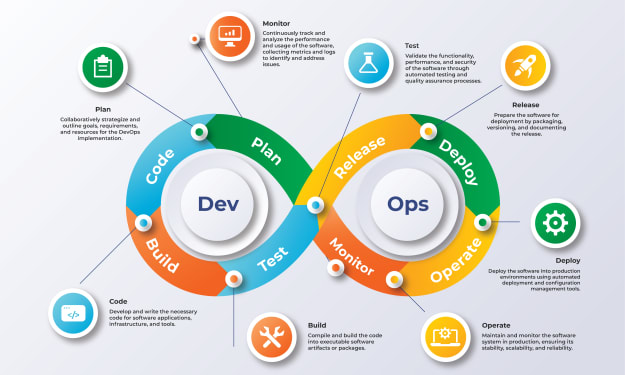How to Start Investing: A Beginner's Guide
A Step-by-Step Approach to Building Wealth through Smart Investments

Introduction
Investing is a powerful tool that can help individuals grow their wealth and achieve their financial goals. However, for beginners, the world of investing can seem daunting and complex. In this comprehensive guide, we will walk you through the fundamental steps of how to start investing. From understanding the basics of investing to selecting the right investment vehicles, this article aims to provide valuable insights and practical tips for those who are new to the world of investing.
1. Understanding the Basics
Before diving into investing, it's crucial to grasp the basics. Start by familiarizing yourself with key investment concepts such as risk and return, diversification, and the power of compounding. Risk and return are inherently linked, meaning that higher potential returns usually come with higher risks. Diversification, on the other hand, involves spreading investments across different asset classes to mitigate risk. The power of compounding emphasizes the benefits of starting early and letting your investments grow over time.
2. Setting Financial Goals
Establishing clear financial goals is essential for successful investing. Determine what you want to achieve through investing. Are you saving for retirement, a down payment on a house, or your child's education? Your goals will help shape your investment strategy and time horizon. Setting specific, measurable, achievable, relevant, and time-bound (SMART) goals will provide a roadmap for your investment journey.
3. Assessing Risk Tolerance
Understanding your risk tolerance is crucial for building an investment portfolio that aligns with your comfort level. Assess your ability to withstand market fluctuations and potential losses. Consider your time horizon, financial obligations, and emotional resilience. A risk tolerance questionnaire or consulting with a financial advisor can help you gauge your risk appetite.
4. Types of Investments
Next, familiarize yourself with different investment options. Common investment vehicles include stocks, bonds, mutual funds, exchange-traded funds (ETFs), real estate, and commodities. Stocks represent ownership in a company, while bonds are debt securities. Mutual funds and ETFs pool money from multiple investors to invest in a diversified portfolio. Real estate can offer long-term value appreciation and rental income, while commodities include precious metals, oil, and agricultural products. Each investment type has its own risk profile, potential return, and suitability for different investors.
5. Developing an Investment Strategy
Crafting an investment strategy is vital to achieving your financial goals. Determine your asset allocation, which refers to the percentage of your portfolio allocated to different asset classes based on risk tolerance and time horizon. Consider a balanced approach that diversifies investments across multiple asset classes. Additionally, decide between active and passive investing. Active investing involves selecting individual stocks and timing the market, while passive investing focuses on low-cost index funds that track specific market indexes. Research various investment strategies and find one that resonates with your goals and risk tolerance.
6. Choosing a Brokerage Account
To start investing, you'll need a brokerage account. Research different brokerage firms and compare their features, fees, customer service, and investment options. Look for reputable institutions with user-friendly platforms, educational resources, and competitive commission rates. Online brokers often offer a wide range of investment choices and convenient tools for beginners.
7. Building a Diversified Portfolio
Diversification is key to managing risk. Spread your investments across different asset classes, industries, and geographic regions. This reduces the impact of a single investment's performance on your overall portfolio. Consider investing in low-cost index funds or exchange-traded funds (ETFs) that provide instant diversification. Regularly review and rebalance your portfolio to maintain the desired asset allocation.
8. Monitoring and Adjusting
Regularly monitor your investments and stay informed about market trends and economic news. However, avoid making impulsive decisions based on short-term fluctuations. Instead, focus on your long-term goals. Periodically review your portfolio's performance and make adjustments as needed. Consider consulting with a financial advisor for professional guidance and objective insights.
Conclusion
Starting your investing journey can be intimidating, but with the right knowledge and mindset, you can navigate the world of investing confidently. Remember to educate yourself, set clear goals, assess your risk tolerance, diversify your portfolio, and stay disciplined. Investing is a long-term commitment, and with patience and perseverance, you can achieve your financial aspirations.
Thankyou for reading! Comment below if you have a favourite story of mine.

About the Creator
Sangit KC
Just Believe in Yourself. Others might be wrong.
Enjoyed the story? Support the Creator.
Subscribe for free to receive all their stories in your feed. You could also pledge your support or give them a one-off tip, letting them know you appreciate their work.





Comments
There are no comments for this story
Be the first to respond and start the conversation.